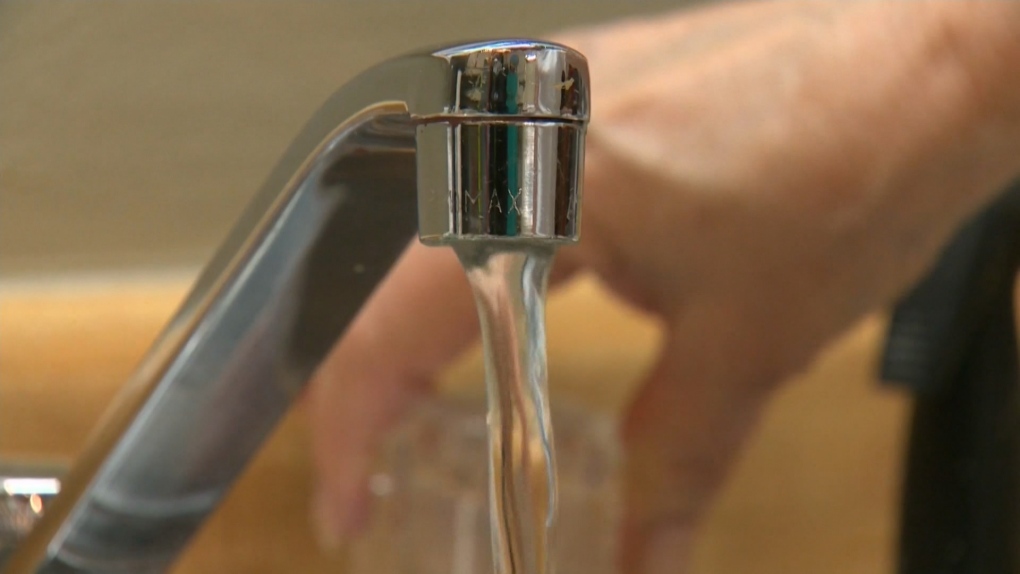CRD planning to spend $2B to protect regional water supply
The Capital Regional District (CRD) is looking to spend just over $2-billion, spread out over 30 years, to protect the region's water supply.
Roughly $1-billion would go towards building the region's first-ever water filtration plant. The other billion would expand the existing Sooke Lake Reservoir and upgrade and twin some of its existing infrastructure.
"It’s really focused on managing and mitigating those risks associated with a regional water supply," said Ted Robbins, general manager of Integrated Water Services with the CRD.
The big risk is climate change and its effect on the quality of raw water.
One of those risks is more intense rainstoms in the winter, which can cause run-off from surrounding hills.
Alternatively, hotter summers can lead to droughts and algae blooms.

While the $2-billion long term plan can be an eyebrow-raising amount, the CRD says it's a necessary cost.
Currently, water in the Sooke Lake Reservoir is so clean it doesn’t need to be filtered. Instead, the water is disinfected with UV light and treated with chlorine and ammonia. If it did need to be filtered, there is no infrastructure in place capable of completing that task.
"We’re also anticipating the needs for water supply in respect to the growing region," said Robbins.
By 2050, the population in the region is expected to grow by nearly 170,000 people.
A "twinning" of some of the infrastructure is a big part of the project. If there is a failure with today’s infrastructure, there is no backup plan.
WATER COSTS
Another important question is, will there be an increase in the water rate?
The CRD says yes there will be. Currently, the wholesale rate that water is sold by the CRD to municipalities is about 73 cents per cubic metre.
"We’re anticipating based on our modeling that that rate may increase up to three or four times by the late 2030s," said Robbins.
The estimated completion date for the $1-billion filtration plant is 2037.
"We know that with the climate emergency, with climate change, with the extreme weather that we’re getting, that we’re going to have to treat our water at a higher level," said Lillian Szpak, chair of the Regional Water Supply Commission.
Szpak says the 30-year plan will ensure that the region's water supply stays healthy.
"All of these things are for the greater good of our community and making sure we’ve got plenty of good, safe drinking water," she said.
The cost estimates for all 21 capital projects in the CRD's 30-year plan have been scaled for around the time of completion of each project. That is to account for inflationary factors going forward.
Currently, the project is going through its public engagement process, which gives the community the chance to provide feedback on the project.
Feedback can be submitted to the CRD through its website until July 6.
After that, the commission will decide to endorse the plan or not.
CTVNews.ca Top Stories

Young people 'tortured' if stolen vehicle operations fail, Montreal police tell MPs
One day after a Montreal police officer fired gunshots at a suspect in a stolen vehicle, senior officers were telling parliamentarians that organized crime groups are recruiting people as young as 15 in the city to steal cars so that they can be shipped overseas.
'It was joy': Trapped B.C. orca calf eats seal meat, putting rescue on hold
A rescue operation for an orca calf trapped in a remote tidal lagoon off Vancouver Island has been put on hold after it started eating seal meat thrown in the water for what is believed to be the first time.
Man sets self on fire outside New York court where Trump trial underway
A man set himself on fire on Friday outside the New York courthouse where Donald Trump's historic hush-money trial was taking place as jury selection wrapped up, but officials said he did not appear to have been targeting Trump.
Sask. father found guilty of withholding daughter to prevent her from getting COVID-19 vaccine
Michael Gordon Jackson, a Saskatchewan man accused of abducting his daughter to prevent her from getting a COVID-19 vaccine, has been found guilty for contravention of a custody order.
Mandisa, Grammy award-winning 'American Idol' alum, dead at 47
Soulful gospel artist Mandisa, a Grammy-winning singer who got her start as a contestant on 'American Idol' in 2006, has died, according to a statement on her verified social media. She was 47.
She set out to find a husband in a year. Then she matched with a guy on a dating app on the other side of the world
Scottish comedian Samantha Hannah was working on a comedy show about finding a husband when Toby Hunter came into her life. What happened next surprised them both.
B.C. judge orders shared dog custody for exes who both 'clearly love Stella'
In a first-of-its-kind ruling, a B.C. judge has awarded a former couple joint custody of their dog.
Saskatoon police to search landfill for remains of woman missing since 2020
Saskatoon police say they will begin searching the city’s landfill for the remains of Mackenzie Lee Trottier, who has been missing for more than three years.
Shivering for health: The myths and truths of ice baths explained
In a climate of social media-endorsed wellness rituals, plunging into cold water has promised to aid muscle recovery, enhance mental health and support immune system function. But the evidence of such benefits sits on thin ice, according to researchers.
































